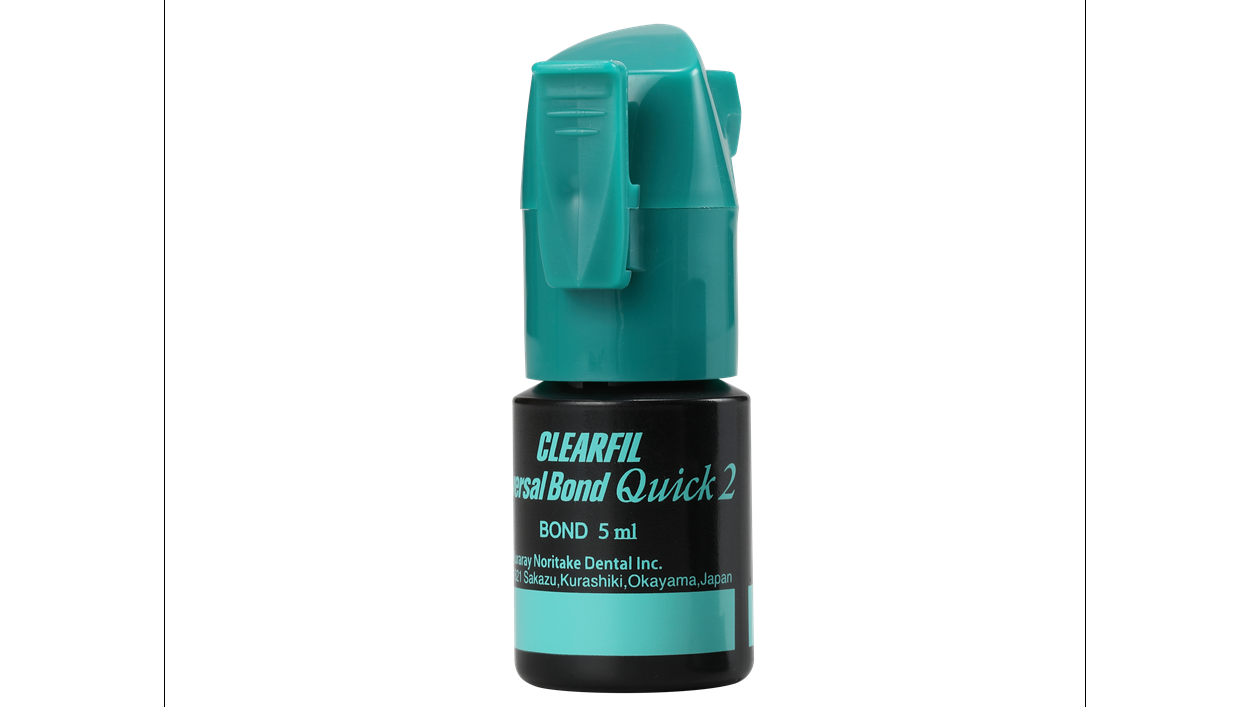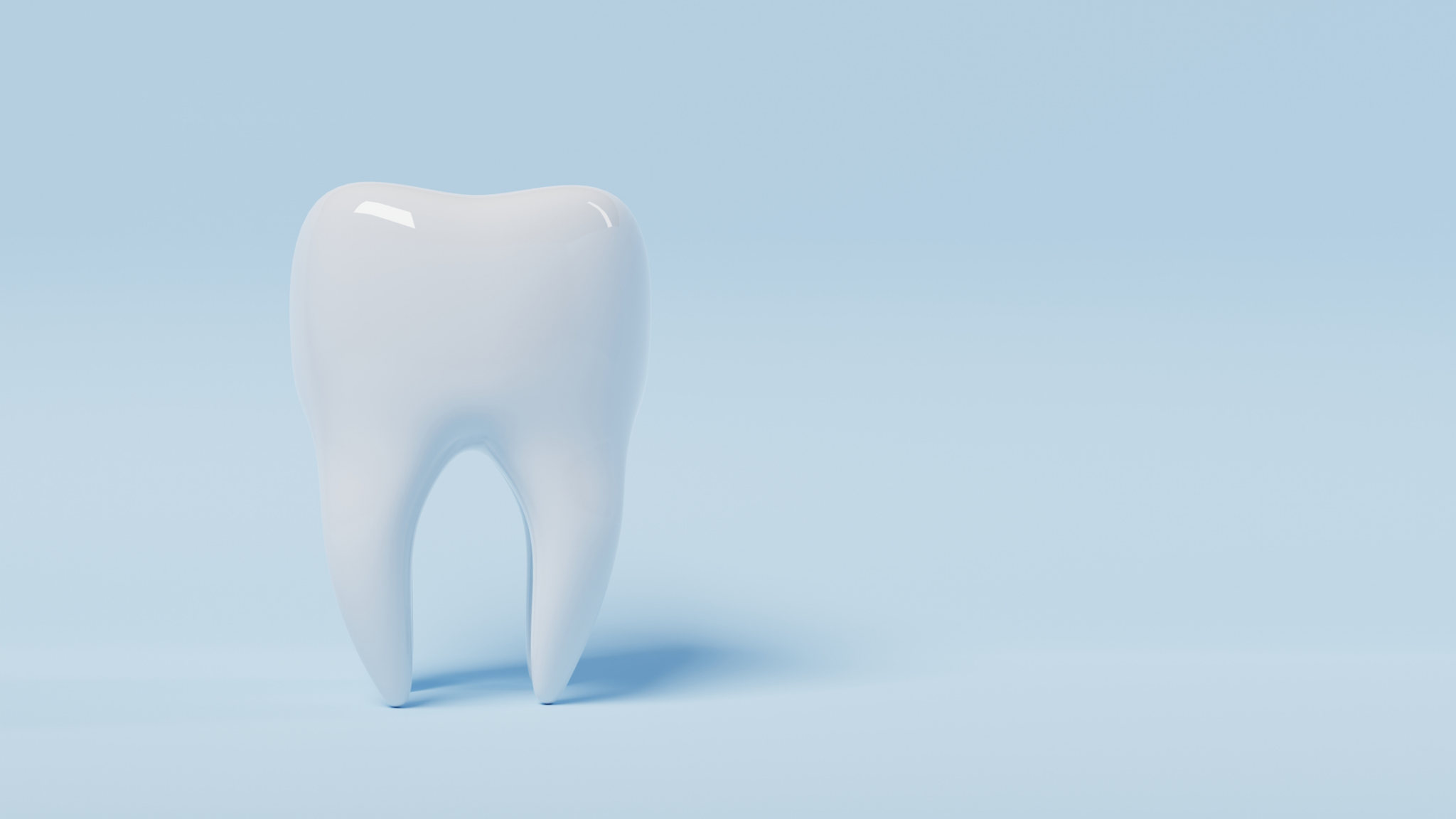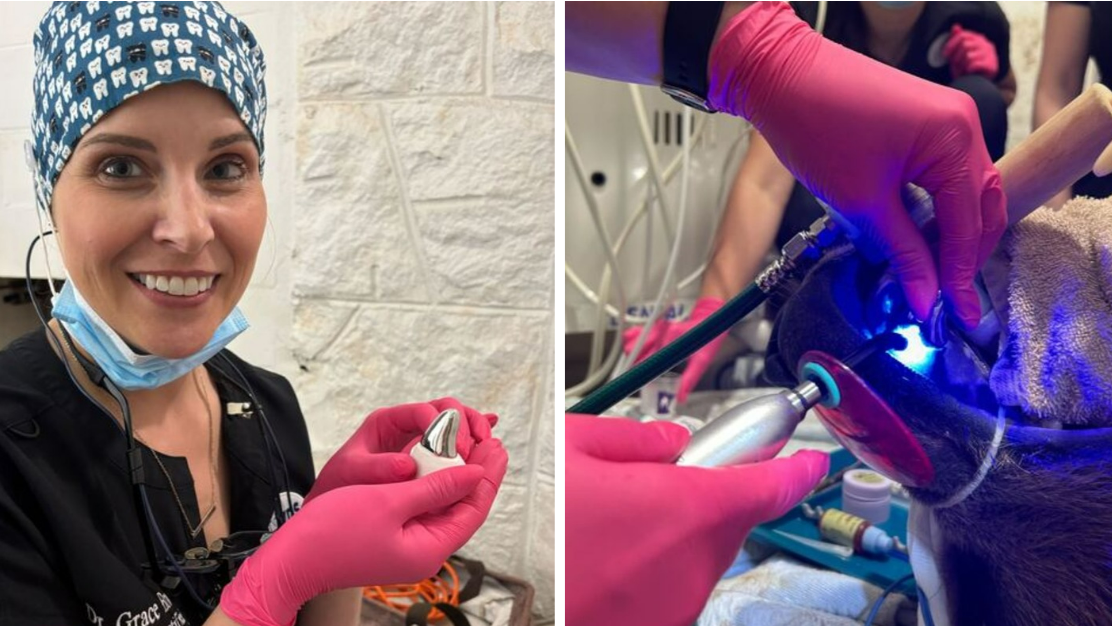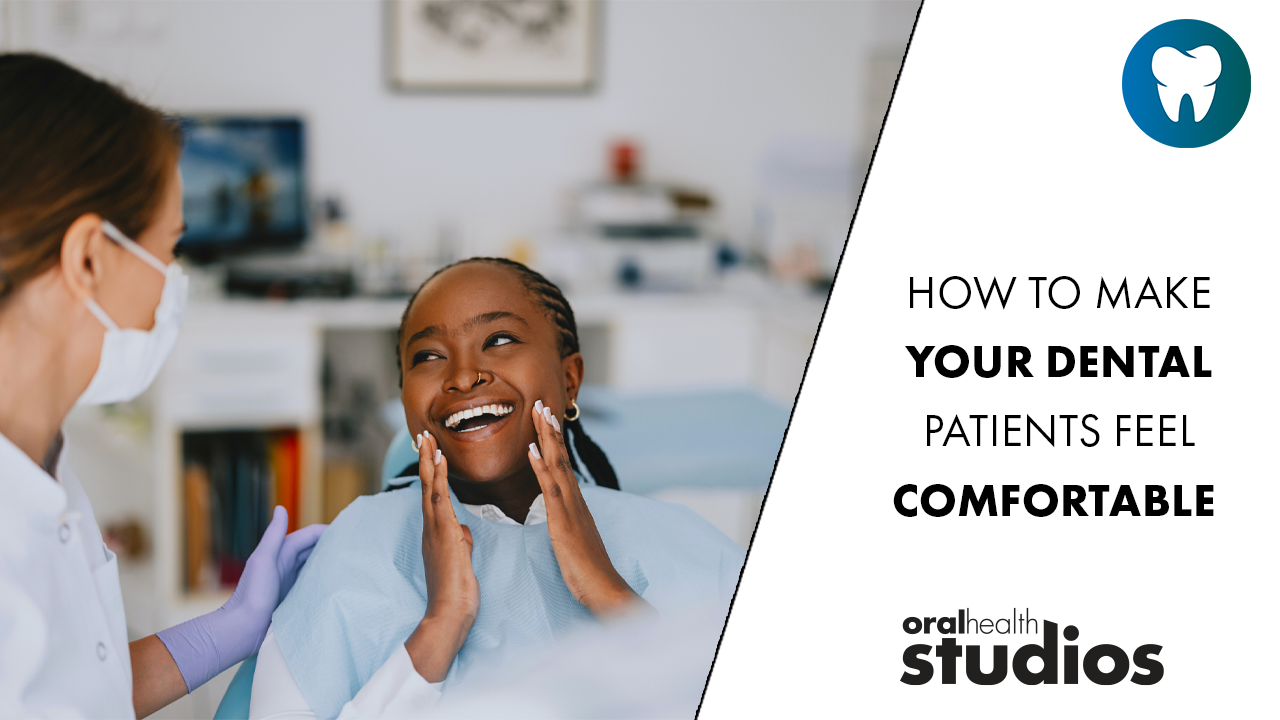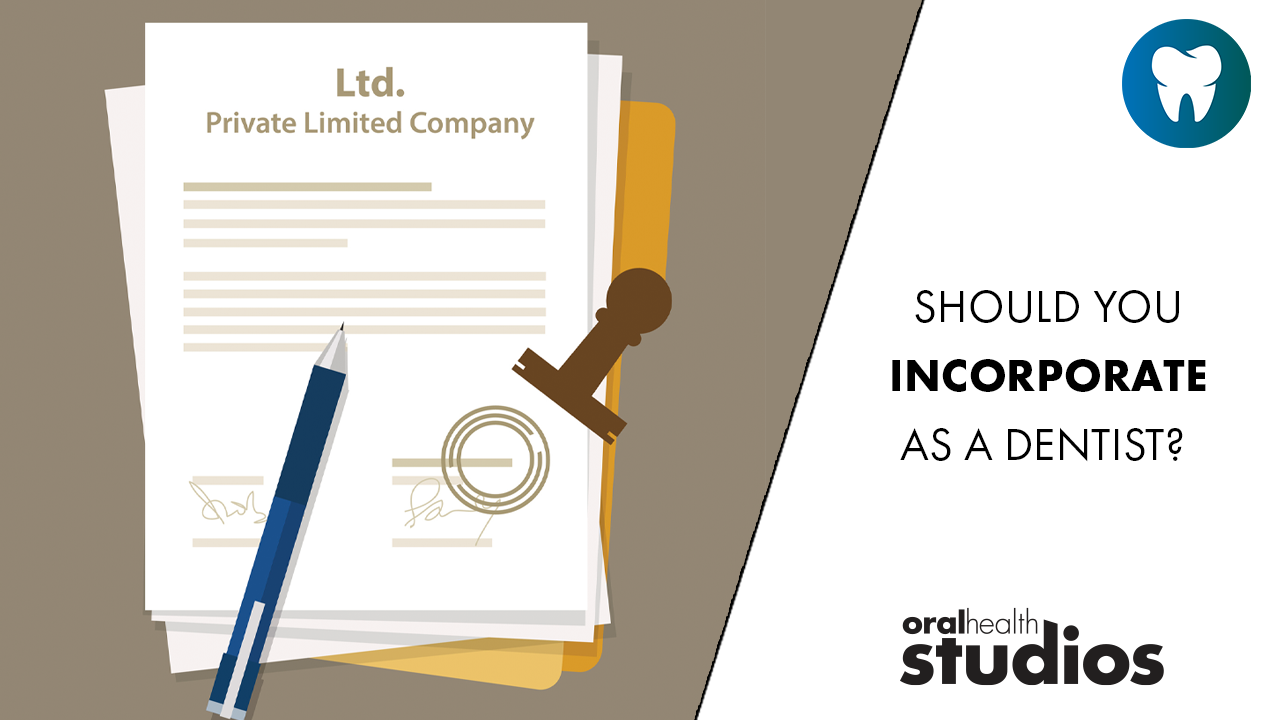Curing lights have become an integral part of dental practice 1 where they are now used to light cure direct composites, provisional restorations, luting cements, sealants, and orthodontic bracket cements. When a restoration fails (Fig. 1), or a bracket falls off, most assume that there was a problem with the materials used. But what if the resin had been inadequately cured due to improper curing technique, or an inadequate curing light? It is often said that if you cannot measure it, you cannot manage it. So, what do you need to know about the curing light so that you can manage the problem of inadequate resin curing? This article will explain why you should know the radiant power (mW), radiant exitance (mW/cm2), irradiance, spectral radiant power (mW/nm), and beam profile from your curing light.
Fig. 1
Failed composite restorations.

First the Basics
The light output from a dental curing light is best reported using the internationally recognized International System of Units (S.I.) terms of radiant power (mW), spectral radiant power (mW/nm), radiant exitance (mW/cm2), and irradiance received at a surface (mW/cm2). You should ignore vague or even misleading terms such as intensity, power density, or brightness. 2 Note, the radiant exitance and the irradiance will be the same when measured at the light tip, but the irradiance received will decline as the distance from the tip increases. Typically, dentists look for a curing light that delivers an irradiance of at least 1,000 mW/cm2. However, this value does not give enough information and can even be misleading because it is a calculated value from the radiant power measured at the tip. Also, the irridence value not describe what wavelengths of light are emitted from the curing light or the effect of distance from the tip.
Look at the Power (in watts), not just the Irradiance
Simply by using a small tip diameter, a curing light can deliver an irradiance of 1,000 mW/cm2, but be less powerful than another light that has a wider light tip. To illustrate this point, Table 1 shows the effect of tip diameter on tip irradiance. Even a small reduction in the light tip diameter from 10 to 7 mm (just 1.5 mm on each side of the tip) will reduce the area of the light tip by half from 0.79 cm2 (10 mm diameter) to 0.38 cm2 (7 mm diameter). Since the irradiance is calculated from the radiant power divided by the tip area, this 3 mm reduction in tip diameter will double the tip irradiance, even though the radiant power from the light will still be the same.
Thus, knowing both the radiant power (mW) that the curing light delivers and the active tip diameter (mm) is a far better purchasing criterion than knowing the irradiance alone. The BluePhase Meter II (Ivoclar Vivadent) can accurately measure (±10%) the radiant power from dental curing lights. 3 In addition, when the tip diameter (in mm) is measured using a ruler or the scale on the back of the meter (Fig. 2) and entered into the software, this meter can calculate the irradiance (mW/cm2) at the tip of the curing light. Since the effect of distance on the irradiance received is not the same for all curing lights, most manufacturers are now also reporting the effect of distance on the irradiance that a restoration could receive. This allows the dentist to understand that it may be necessary to increase exposure times as the distance between the light tip and the resin increases.
Table 1
Effect of tip diameter on irradiance when the same radiant power (800 mW) is emitted. Note the irradiance values range from 603 to 2829 (mW/cm2), even though the light still delivers the same power.

Fig. 2
The new Bluephase Meter II can measure both the power (mW) and irradiance when the tip diameter is entered into the software.


Active Light Tip Diameter
When calculating the irradiance, the relevant diameter/area is the optically active diameter/area from where useful light comes out from the light tip. This is NOT the external diameter of the light tip, or even the full internal diameter of the light tip. Some manufacturers are now reporting the optically active tip diameter/area from where light is emitted. 4
Deciding whether you should use a curing light with a large or a small tip diameter depends on your personal preference and the type of practice you have. Figure 3 shows the light tips of two contemporary curing lights. Note the obvious differences in the tip sizes between these two lights, and the difference between the external and the internal light tip diameters. This will result in large differences in the tip areas. The wide 11.7 mm diameter light tip on the Valo Grand (Ultradent) can easily cover the surface of most restorations, reduce the number of light exposures, and thus the time required to adequately cure a large restoration. In contrast, an 8 mm tip cannot completely cover a mesial-occlusal-distal bulk filled composite restoration in a molar tooth, or a crown 5 and the clinician must use multiple, sequential, overlapping exposures to ensure that all areas of a restoration have received adequate amounts of light. However, an 8 mm diameter light tip can adequately cover and cure a small increment of composite and can be useful when light curing restorations that are close to the gingival tissues.
Fig. 3
Light tips of two contemporary curing lights. Note the difference in tip sizes.

Emission Spectrum (Wavelengths of Light)
The photoinitiators used in dental resins require the right wavelength (colour) of light to work. The broad emission spectrum from quartz-halogen lights activate all the photoinitiators used in dental resins. However, the emitters used in light emitting diode (LED) curing lights can only deliver a narrow range of wavelengths (Fig. 4), and many LED curing lights do not emit much, if any, light below 420 nm. 2 Consequently, most single peak LED curing lights cannot efficiently activate the Lucirin TPO initiator that is used in some brands of composite resin. Figure 5 overlays the emission spectrum from three single peak lights to a multipeak light. Note how the multipeak light delivers light below 420 nm. For example, the SmartLite Focus (DentsplySirona) has a peak wavelength output in the 460-490 nm range6, and the instructions for the Deep Cure-S (3M) state that the usable output from this light is in the 430-480 nm range.4 The makers of some composites recommend that their resin receive a broader range of wavelengths from 400 to 500 nm. 7 While some lights cover most, if not all, of this range (Figs. 5A & B), if the dentist uses the SmartLite Focus light to cure such a composite, there may be as much as 60 nm mismatch between the wavelengths of light recommended by the resin manufacturer and the light output from the curing lights (Fig. 5C). In order to use the most appropriate curing light to cure the resin that they are using, the dentist should therefore know both the emission spectrum (wavelengths of light) from their curing light and the wavelengths of light required by the resin. This information is usually provided in the instructions for use for the curing light and the resin.
Figure 5 illustrates the narrow emission spectra from the LED emitters and the stable but different power outputs from these three lights. Note how the power from the Demi Ultra is deliberately pulsing. Figure 4 shows that light manufacturers must use a combination of two or more different colours of LEDs to broaden the overall emission spectrum from the curing light. While such polywave®/multiple peak broad-spectrum LED curing lights can activate all known dental photoinitiators, Figure 6C shows that it can be challenging to achieve a uniform light output from the multiple LEDs in the unit. It may even be unnecessary for you to purchase such a polywave®/multiple peak broad-spectrum LED curing light if your resin does not require the lower wavelengths of light below 420 nm.
Fig. 4
Examples of the radiant power, spectral radiant power, emission spectrum and peak wavelengths from single, dual and triple peak curing LED lights. Note the narrow range of wavelengths emitted by the individual LEDs and how, by including different colours of LEDs, the dual and triple peak lights deliver a broader spectrum of light.



Fig. 5A, 5B, 5C
Examples of the light output from the SmartLite Focus, Demi Ultra, and DeepCure-S when compared to the Valo Grand multiple peak LED curing light. Note that the Demi Ultra and Deep Cure-S deliver greater spectral radiant power (mW/nm) in the 450 to 465 nm range, but the Valo Grand delivers a broader spectrum of light and the greatest overall radiant power (mW).



Light Beam Profile from Dental Curing Lights
Much like a chef wants an oven that delivers heat uniformly to the food, dental curing lights should also deliver light uniformly to the resin. Laser beam profilers (Ophir Spiricon, http://www.ophiropt.com/laser–measurement/beam-profilers) have now been adapted so that they can measure and report the distribution of light from a dental curing light. 2,8,9 The data can be calibrated to produce a 2 or 3-dimensional image of the irradiance distribution across the tip of the curing light. Some dental companies are now including such beam profile images in their marketing brochures.
Figures 6 and 7 illustrate how images taken using a beam profiler can be used to manage differences between curing lights and can help the dentist choose which light to purchase. Figure 6 shows that the Valo Grand (Ultradent) delivers a very uniform irradiance across its large light tip. The tip diameter of the Valo Grand is 11.7 mm, and the beam profile shows that the active light tip diameter from where useful light is emitted is only 50 microns less on each side (11.6 mm). This 11.6 mm active tip diameter is greater than most, if not all, LED curing lights that are currently available. Figure 6 also shows that the radiant exitance (irradiance) emitted across the light tips of two other currently available curing lights (B and C) is not uniform. Additionally, although light delivers an average irradiance of 1,084 mW/cm2, it delivers less than half the radiant power (417 mW) of the Valo Grand. Light B only appears to be a powerful light, delivering above 1,000 mW/cm2, because it has a 7 mm tip diameter. Light C delivers an extremely non-uniform light output. At the very center of the light tip, the irradiance is close to 12,000 mW/cm2, which may burn the tissue and cause uneven resin curing, yet the overall irradiance of 1,486 mW/cm2 seems to be acceptable. Neither the difference in active tip diameter nor how uniformly the light is emitted across a light tip, can be detected by the human eye or by a conventional power meter and can only be seen in the images of the beam profile. When such beam profile images are superimposed over a molar tooth (Fig. 7), the clinical relevance of beam profiling becomes readily apparent can help the dentist choose the most appropriate curing light for their practice. 1,2,10-12
Fig. 6A, 6B, 6C
Beam profiles of three curing lights (A, B, and C) all on the same irradiance and mm scale. (The light in 6A is different from the light measured in Fig. 4)



Fig. 7
Beam profile image from two curing lights, one with a wide (A) and one with a narrow (B) active light tip superimposed over a molar tooth. Note the lack of uniform light coverage from light (B).

Summary
When evaluating a curing light, these are the features to consider, it is not just the irradiance:
1. Know the radiant power (mW). This tells you how powerful the light is.
2. Use the radiant power and the active tip diameter to calculate the radiant exitance (tip irradiance in mW/cm2).
3. Know the effect of distance on the irradiance received by the resin. You may need to increase the exposure time as the distance increases.
4. Know the wavelengths of light and the spectral radiant power. Match the curing light to the wavelengths required to cure the resin you are using.
5. Know the beam profile. It shows you the size and uniformity of the light output – you may need multiple exposures to cover a restoration. OH
Oral Health welcomes this original article.
References
- Rueggeberg FA, Giannini M, Arrais CAG, Price RBT. Light curing in dentistry and clinical implications: a literature review. Braz Oral Res 2017;31:e61.
- Price RB, Ferracane JL, Shortall AC. Light-Curing Units: A Review of What We Need to Know. J Dent Res 2015;94:1179-86.
- Shimokawa CA, Harlow JE, Turbino ML, Price RB. Ability of four dental radiometers to measure the light output from nine curing lights. J Dent 2016;54:48-55.
- (http://solutions.3mindia.co.in/3MContentRetrievalAPI/BlobServlet?lmd=1451874374000&locale=en_IN&assetType=MMM_Image&assetId=1362012288808&blobAttribute=ImageFile)
- Ash MM, Nelson SJ, Ash MM. Dental anatomy, physiology, and occlusion. 8th ed. Philadelphia: W.B. Saunders; 2003.
- (https://www.dentsplysirona.com/content/dam/dentsply/pim/manufacturer/Restorative/Accessories/Curing_Lights/LED_Lights/SmartLite_Focus_Pen_Style_LED_Curing_Light/SmartLite%20Focus_DFU_EN_DE_IT_ES_FR.pdf)
- (http://www.ivoclarvivadent.com/en/p/all/products/restorative-materials/composites/tetric-evoceram).
- Shimokawa C, Sullivan B, Turbino ML, Soares CJ, Price RB. Influence of Emission Spectrum and Irradiance on Light Curing of Resin-Based Composites. Oper Dent 2017;42:537-47.
- Rocha MG, de Oliveira D, Correa IC, Correr-Sobrinho L, Sinhoreti M, Ferracane JL, et al. Light-emitting Diode Beam Profile and Spectral Output Influence on the Degree of Conversion of Bulk Fill Composites. Oper Dent 2017;42:418-27.
- Price RB, Labrie D, Rueggeberg FA, Sullivan B, Kostylev I, Fahey J. Correlation between the beam profile from a curing light and the microhardness of four resins. Dent Mater 2014;30:1345-57.
- Shortall AC, Price RB, MacKenzie L, Burke FJ. Guidelines for the selection, use, and maintenance of LED light-curing units–Part 1. Br Dent J 2016;221:453-60.
- Shortall AC, Price RB, MacKenzie L, Burke FJ. Guidelines for the selection, use, and maintenance of LED light-curing units–Part II. Br Dent J 2016;221:551-4.
About the Author
 Dr. Price is the Division Head for Fixed Prosthodontics at Dalhousie University, Halifax, Canada. He received his BDS from the University of London, England, DDS from Dalhousie, and PhD in Oral Technology and Dental Materials at the University of Malmö, Sweden. Dr. Price is Professor of Prosthodontics at Dalhousie Dentistry and cross-appointed in the Faculty of Biomedical Engineering. He has made numerous presentations and authored more than 120 peer-reviewed articles. In 2013-2017 he organized symposia on Light Curing in Dentistry at Dalhousie University.
Dr. Price is the Division Head for Fixed Prosthodontics at Dalhousie University, Halifax, Canada. He received his BDS from the University of London, England, DDS from Dalhousie, and PhD in Oral Technology and Dental Materials at the University of Malmö, Sweden. Dr. Price is Professor of Prosthodontics at Dalhousie Dentistry and cross-appointed in the Faculty of Biomedical Engineering. He has made numerous presentations and authored more than 120 peer-reviewed articles. In 2013-2017 he organized symposia on Light Curing in Dentistry at Dalhousie University.

